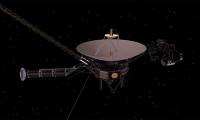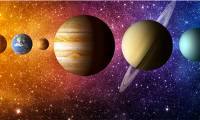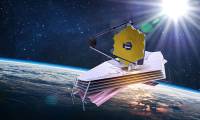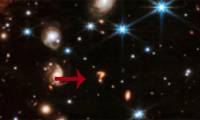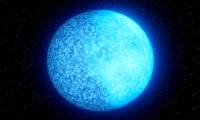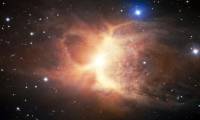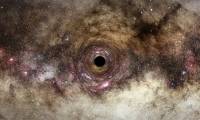
The time it takes for the Moon to orbit the Earth is about 27.3 days, while the Earth rotates once around its axis in 24 hours (one day - one night).

On February 3, China Mobile launched the first satellite to test 6G technology, surprising the world.
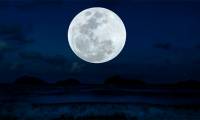
Throughout the history of human astronomical research, one of the most familiar and most studied objects is the Moon.
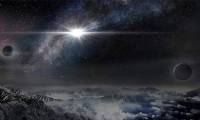
When a massive star runs out of fuel and is nearing the end of its life, it explodes in a giant burst of energy called a supernova.

After many months of delay, SLS - the most powerful rocket humanity has ever built has left the launch pad in Florida, USA, carrying the Orion spacecraft as part of the Artemis I

Space reported on October 23 that NASA has just completed sending an important software update to the Voyager 2 probe, operating 12 billion miles (about 19.9 billion km) from

The Orion Nebula is one of the most observed and photographed objects in the sky, and also one of the most studied celestial bodies.

Orbiting nearly 3 million miles from the sun, Neptune is distant from Earth.

According to estimates by astronomers based on the assumption that each star has a planet orbiting, the universe has about 100,000 billion billion planets.

The stars and planets in the universe have different sizes and masses, but they are all spherical. So why are they all spherical and not any other shape?

Russia has just successfully launched a lunar lander, marking the country's race against India, the US and China in this celestial exploration race.

Nicknamed El Gordo, or fat galaxy cluster, this galaxy cluster is thought to be more than 2 million billion times the mass of the sun.

Although it is not clear what this 'question mark' is, but based on its shape and color, the Space Telescope Science Institute (STScI), which runs the Webb telescope project,

Time to wait, yet another stunning image sent back to Earth by the Hubble Space Telescope this week, including two different merged exposures, shows the star's dramatic moment

Due to its strange appearance, this white dwarf has been nicknamed Janus, after the Roman god with two faces.

It is no exaggeration to say that nebulae are among the most beautiful structures found in space. They are essentially giant clouds of dust and gas, shimmering with light from

International scientists have released a stunning new image showing star formation inside a nebula located 500 light-years from Earth.

Throughout the history of astronomical research, anthropologists have found numerous 'small muscle' black holes, with masses 100 times less than that of the sun.

At 23:00 today, the European Space Agency (ESA) will conduct the first livestream from Mars with the Mars Express spacecraft to celebrate the 20th anniversary of the launch.

The origin of water on Earth has long been one of the most controversial questions in scientific circles.
 The time it takes for the Moon to orbit the Earth is about 27.3 days, while the Earth rotates once around its axis in 24 hours (one day - one night).
The time it takes for the Moon to orbit the Earth is about 27.3 days, while the Earth rotates once around its axis in 24 hours (one day - one night). On February 3, China Mobile launched the first satellite to test 6G technology, surprising the world.
On February 3, China Mobile launched the first satellite to test 6G technology, surprising the world. Throughout the history of human astronomical research, one of the most familiar and most studied objects is the Moon.
Throughout the history of human astronomical research, one of the most familiar and most studied objects is the Moon. When a massive star runs out of fuel and is nearing the end of its life, it explodes in a giant burst of energy called a supernova.
When a massive star runs out of fuel and is nearing the end of its life, it explodes in a giant burst of energy called a supernova. After many months of delay, SLS - the most powerful rocket humanity has ever built has left the launch pad in Florida, USA, carrying the Orion spacecraft as part of the Artemis I
After many months of delay, SLS - the most powerful rocket humanity has ever built has left the launch pad in Florida, USA, carrying the Orion spacecraft as part of the Artemis I Space reported on October 23 that NASA has just completed sending an important software update to the Voyager 2 probe, operating 12 billion miles (about 19.9 billion km) from
Space reported on October 23 that NASA has just completed sending an important software update to the Voyager 2 probe, operating 12 billion miles (about 19.9 billion km) from The Orion Nebula is one of the most observed and photographed objects in the sky, and also one of the most studied celestial bodies.
The Orion Nebula is one of the most observed and photographed objects in the sky, and also one of the most studied celestial bodies. Orbiting nearly 3 million miles from the sun, Neptune is distant from Earth.
Orbiting nearly 3 million miles from the sun, Neptune is distant from Earth. According to estimates by astronomers based on the assumption that each star has a planet orbiting, the universe has about 100,000 billion billion planets.
According to estimates by astronomers based on the assumption that each star has a planet orbiting, the universe has about 100,000 billion billion planets. The stars and planets in the universe have different sizes and masses, but they are all spherical. So why are they all spherical and not any other shape?
The stars and planets in the universe have different sizes and masses, but they are all spherical. So why are they all spherical and not any other shape? Russia has just successfully launched a lunar lander, marking the country's race against India, the US and China in this celestial exploration race.
Russia has just successfully launched a lunar lander, marking the country's race against India, the US and China in this celestial exploration race. Nicknamed El Gordo, or fat galaxy cluster, this galaxy cluster is thought to be more than 2 million billion times the mass of the sun.
Nicknamed El Gordo, or fat galaxy cluster, this galaxy cluster is thought to be more than 2 million billion times the mass of the sun. Although it is not clear what this 'question mark' is, but based on its shape and color, the Space Telescope Science Institute (STScI), which runs the Webb telescope project,
Although it is not clear what this 'question mark' is, but based on its shape and color, the Space Telescope Science Institute (STScI), which runs the Webb telescope project, Time to wait, yet another stunning image sent back to Earth by the Hubble Space Telescope this week, including two different merged exposures, shows the star's dramatic moment
Time to wait, yet another stunning image sent back to Earth by the Hubble Space Telescope this week, including two different merged exposures, shows the star's dramatic moment Due to its strange appearance, this white dwarf has been nicknamed Janus, after the Roman god with two faces.
Due to its strange appearance, this white dwarf has been nicknamed Janus, after the Roman god with two faces. It is no exaggeration to say that nebulae are among the most beautiful structures found in space. They are essentially giant clouds of dust and gas, shimmering with light from
It is no exaggeration to say that nebulae are among the most beautiful structures found in space. They are essentially giant clouds of dust and gas, shimmering with light from International scientists have released a stunning new image showing star formation inside a nebula located 500 light-years from Earth.
International scientists have released a stunning new image showing star formation inside a nebula located 500 light-years from Earth. Throughout the history of astronomical research, anthropologists have found numerous 'small muscle' black holes, with masses 100 times less than that of the sun.
Throughout the history of astronomical research, anthropologists have found numerous 'small muscle' black holes, with masses 100 times less than that of the sun. At 23:00 today, the European Space Agency (ESA) will conduct the first livestream from Mars with the Mars Express spacecraft to celebrate the 20th anniversary of the launch.
At 23:00 today, the European Space Agency (ESA) will conduct the first livestream from Mars with the Mars Express spacecraft to celebrate the 20th anniversary of the launch. The origin of water on Earth has long been one of the most controversial questions in scientific circles.
The origin of water on Earth has long been one of the most controversial questions in scientific circles.
